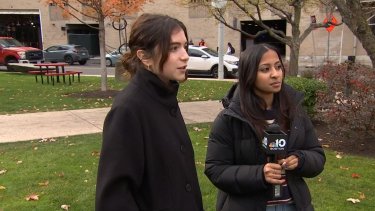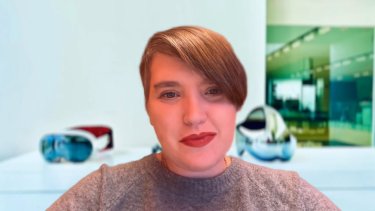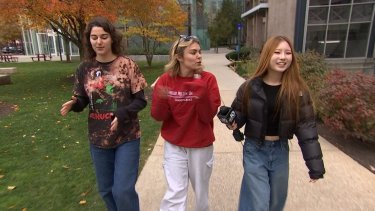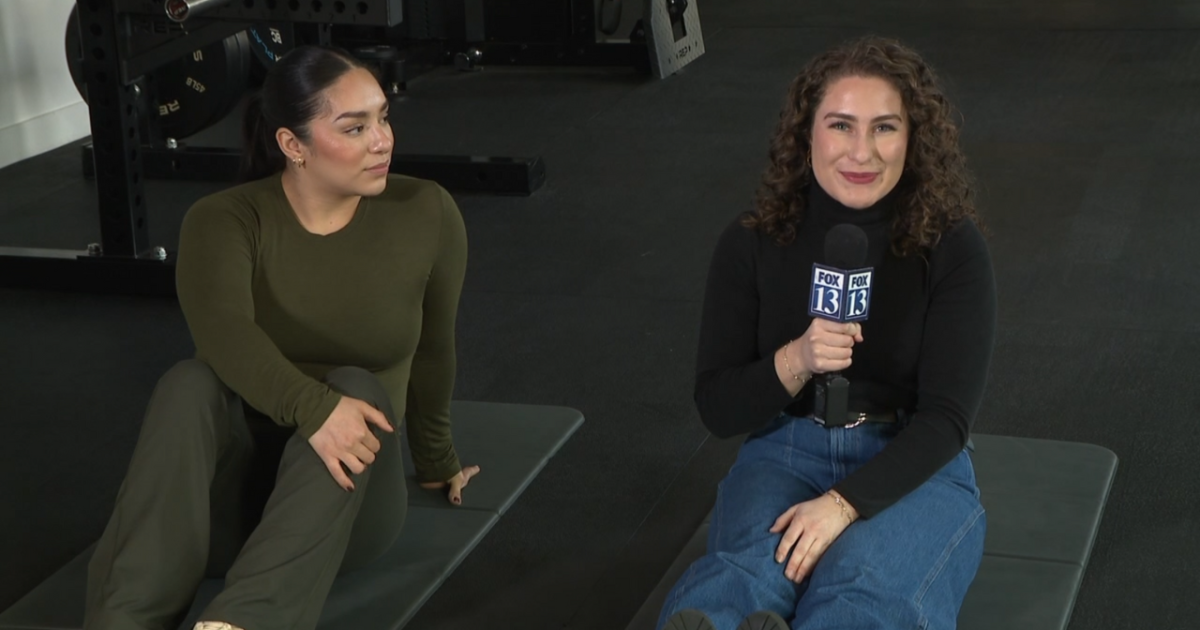Boston, MA
Celtics give injury updates on Jayson Tatum, Jaylen Brown

There is no timeline for Jayson Tatum to return from his ruptured Achilles, and the Boston Celtics don’t anticipate having one anytime soon. At least the news is better on Boston’s other injured star, Jaylen Brown.
Celtics president of basketball ops. Brad Stevens held court with reporters late Wednesday night after taking Spanish wing Hugo Gonzalez with the No. 28 pick in the NBA Draft, but also gave a quick update on the health and well-being of Boston’s top two players.
Stevens said both Tatum and Brown have been training at the Auerbach Center on a daily basis and are fully committed to their rehabs.
“It’s usually the time of the year when I don’t see those guys a lot,” said Stevens. “They usually go and kind of rest, and get away, but they’ve both prioritized getting better and rehabbing, and after a long season, I appreciate that about them.”
No timeline for Jayson Tatum
Tatum ruptures his Achilles in Game 4 of the Eastern Conference semifinals against the New York Knicks, but was able to undergo surgery the very next day. That is expected to expedite his return, though he’ll likely miss the entire 2025-26 season.
And the Celtics are not going to rush the 27-year-old back. Stevens was asked if there is a timeline for Tatum’s return, and said not to expect one for a while.
“We don’t and we won’t. We won’t put a projected timeline on him for a long, long time,” said Stevens. “As we look at it, there’s no reason to. It’s baby steps right now.”
Stevens said that Tatum has “progressed great” so far, but knows it’s a long road ahead for the six-time NBA All-Star.
“I don’t know what that means with regard to projected timelines,” he said. “That’ll be in consultation with him and [team trainers] Nick [Sang] and Phil Coles and everybody else to make sure that when he hits the court, he is fully ready and fully healthy. That will be the priority.”
Jaylen Brown expected back before training camp
Stevens gave a soft timeline for Brown, who had to undergo a procedure for a partially torn meniscus. Brown has already returned to limited on-court activities, and the Celtics are expecting him to be ready to go “well ahead” of training camp.
“He’s doing great,” Stevens said of Brown. “His rehab looks good. He was actually on the court the other day doing some ball handling and doing some light work around the rim. Nothing big movement-wise yet.”
Priorities for rest of Celtics offseason
While the moves aren’t yet official, the Celtics are reportedly trading away veterans Jrue Holiday and Kristaps Porzingis, moves that have put the team get under the vaunted second apron. Stevens couldn’t discuss the trades on Wednesday, but said the team has been focused on regaining flexibility and maximizing their assets and trade returns.
Now that the Celtics are out of the second apron and have some wiggle room to sign players, Stevens is making his priority for the rest of the offseason clear. It includes bringing back a pair of fan favorites to the Boston frontcourt in veteran Al Horford and reserve big man Luke Kornet.
“As you look at the rest of the team and what we’re trying to do, there’s no question our priorities would be to bring Al and Luke back. Those guys are huge parts of this organization,” said Stevens.
Both are free agents, and would likely have to take a team-friendly deal to return to Boston.
“They’re going to have, I’m sure, plenty of options all over the place, and that’s well deserved,” said Stevens. “But that would be a priority. At the same time, I don’t want to put pressure on them. It would be their call, ultimately, but we would love to have those guys back.”
The Celtics are scheduled to make the second pick in Thursday night’s second round of the NBA Draft — No. 32 overall — and a pair of promising big men remain on the board in Stanford’s Maxime Raynaud and Creighton’s Ryan Kalkbrenner.

Boston, MA
Bots or botox: Confronting AI in the beauty world

The lifespan of lip filler is brief. It’s injected, molded, and quickly absorbed back into the system. Lately, hidden in between the needle and admiring your new pouty grin, a secret third step has crept in: AI.
College students working two jobs, rushing to submit coursework, and maintaining a social life don’t give up looking their best. Time is the price to pay, and young people find themselves leaning on AI tools as a pocket beauty consultant.
Faith Fronduto, a senior at Boston University, understands how efficiency can outweigh effort when it comes to looking and feeling on par.
NBC10 Boston
NBC10 Boston Faith Fronduto, a senior at Boston University.
“We don’t really know what’s real and what’s not,” said Fronduto. “We then therefore feel tempted to contour as well—even if we think it’s wrong or it’s not authentic—just the sole need to fit in.”
The reality is this: in addition to homework and life advice, Gen-Z has found a new way to depend on AI: beauty. And according to experts, it’s forecasted to stay circulating in their daily routine for years to come.
To explore this issue, NBC10 Boston collaborated with Boston University journalism students taking an in-depth reporting class taught by investigative reporter Ryan Kath. We took a deep dive into the presence of AI in social media and broadly, the beauty industry.
AI is a skyrocketing presence in the beauty industry
AI isn’t just simply creeping into the industry, it’s becoming the heart and soul of it. According to a report by The Business Research Company, AI in the beauty industry is expected to skyrocket by 21% in 2029, a whopping $5 billion increase.
A wave of tools such as “color-matching technologies, virtual try-on technologies, personalized beauty recommendations, chatbots for customer support, AR-based beauty content creation,” are rewriting how we perceive ourselves and others.
Experts studying the effects of AI say that pressure to look “snatched,” Gen-Z lingo for perfect, has only intensified as AI-altered images circulate faster than ever.
Dr. Jeffrey Spiegel, founder and owner of The Spiegel Center, a plastic surgery practice specializing in feminization facial and body surgery, said patients now arrive at appointments with a clear expectation of their ideal “after.”
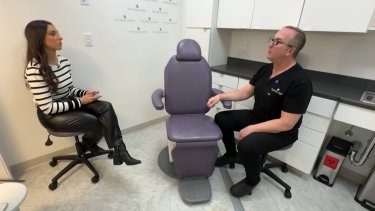
NBC10 Boston
NBC10 Boston Dr. Jeffrey Spiegel with NBC10 Boston’s AI reporter Brianna Borghi
“People will come in with photos of others that have used artificial intelligence or other visual modification software to look more like themselves,” said Speigel, “What we’re seeing is a more empowered and a more knowledgeable group of young women who come in because they know there are things they can do.”
Spiegel noted he has long noticed the trend for young women wanting to preserve their youth, counteracting the signs of aging around the eyes and between the eyebrows using facelifts and blepharoplasties. Now, he said clients define attractiveness as matching the digitally enhanced image of themselves made with the quick click of the “retouch” wand on social media platforms.
“You know what’s going on is that with social media and the omnipresent telephone and screens in our lives,” said Spiegel, “We are subjected to so many images in such rapid succession, like has never happened at any time in human history.”
‘No escape from this idea of what bodies should look like’
Dr. Jill Walsh, founder of Digital Aged Consulting Group and researcher and lecturer at Boston University, studies how social media shapes teens’ lives and how parents can guide their children to use technology intentionally. Her work connects digital behavior and psychology, exploring how AI and algorithms especially affect young women.
NBC10 Boston
NBC10 Boston Dr. Jill Walsh, founder of Digital Aged Consulting Group and researcher and lecturer at Boston University.
During a focus group in October with a group of young women, Walsh jotted a variety of words on a whiteboard like “Ozempic,” “body neutral,” and “body positivity.”
Among all the categories, the women wanted to talk about one thing in particular: the messages they received about their bodies on social media.
“All we’re ever doing is talking about and policing bodies,” Walsh observed. “Even body positivity is still all about your body, right? And there’s sort of no escape from this idea of what bodies should look like.”
In her mind, AI is going down a darker hole than meets the eye. One of the most alarming developments, she notes, is deep fakes or AI-generated videos that take real people – from family members to politicians or yourself – to make them say or do whatever they want.
“I can take this body and put my face on it and that’s getting better and better,” Walsh said, while gesturing towards herself. “I do worry about the idealized version of what we’re going to be seeing. I think all of those are really front of mind for me right now.”
If people continue to doomscroll through TikTok, X, or Instagram and see endless content of nose jobs, face edits, or AI-generated supermodel versions of themselves, these behaviors slowly become normalized, Walsh opined.
Women are not measuring themselves up with the regular Calabasas supermodels and influencers, but with digitally perfected versions of their own faces.
Walsh said it is hard to pinpoint how this fast-moving, sophisticated technology is taking effect on young women, but she does know that it exploits psychological trends that have infamously shown to have dangerous effects.
“We’re always looking for the person who has more,” Walsh said. “What we do know for sure is that comparison is really bad for our well-being, and for some people can lead to anxiety, depression, disordered eating.”
‘You feel tempted to apply a filter to fit in’
According to a report published by Pew Research Center, public commentary generally assumes Gen Z to be the most frequent users of AI. College students are often accused of using AI to manage coursework, but the role of AI in a student’s life before and after class is lesser known.
“If I’m trying to compare products like a certain, you know, lipstick or blush and compare prices and show me, okay, where can I get this for the lowest price?” said Fronduto, “You’re putting in pictures and getting a completely different output, and you’re asking it to change things.”
Social media should be an enjoyable platform to interact and connect with friends, but undetectable AI and digital enhancement has skewed reality and set unrealistic expectations on users, Fronduto believes.
“You feel tempted to apply a filter to fit in thinking that, Oh, I’m just enhancing myself,” Fronduto said. “It’s tempting and I can empathize. Even the filters that make your lips look better and your nose look better, everything is kind of the touch of a button.”
The story was written by Hijazi and Vineeth and edited by Kath.
NBC10 Boston
NBC10 Boston Celine Hijazi and Anaina Vineeth.
Boston, MA
Boston Holocaust Museum installs historic early 20th-century railcar exhibit

Traffic stopped on Tremont Street in downtown Boston early Tuesday morning as a 12-ton historic railcar was lifted over a hundred feet into the city’s future Holocaust Museum, an artifact donated by the family of a survivor and personal reminder of the tragic chapter for Bostonians to look up at.
“We don’t look at this rail car as just an artifact,” said Jody Kipnis, co-founder and CEO of Holocaust Museum Boston. “We look at it as a witness to history. It carried human beings who were stripped of their dignity and sent towards ghettos, labor camps and extermination camps. … We’re placing the rail car into the fourth story glass bay window, right across from the Freedom Trail, so that no one walks by without being reminded of the cost of indifference.”
The restored early 20th-century railcar was lifted in a 173-foot-tall tower crane to be installed in the fourth-floor of the museum just after 9 a.m. Tuesday morning, watched by museum officials, government officials, members of the Jewish community and more.
The installation is a major step in the construction of Boston’s newest museum, set to open late 2026. The museum will be the only one in New England solely dedicated to Holocaust education.
Construction will continue around the massive historic railcar, measuring 30 feet long, 12 feet high, and 8.75 feet wide, officials said. The exhibit will be visible from the street, set up in a protruding bay window, and visitors will be able to walk through the railcar.
“From outside the museum, passersby will see people enter the railcar, but not exit – a visible reminder of the millions of Jews who were transported to their deaths in railcars just like this one,” the museum detailed.
Kipnis said the installation will be one of many interactive parts of the museum.
“We’re inviting the visitor to really examine the past, but then connect it to things that are happening in present day,” said Kipnis. “Not telling the visitor how to do those connections, but helping them throughout the their journey through the museum.”
The CEO said her hope is “people leave committed to standing up against hatred, bigotry and anti-semitism within their schools, communities and workplaces.”
The railcar was donated by Arizona-native Sonia Breslow, whose father was one of fewer than 100 survivors of the 900,000 murdered at Treblinka, the organization said. The artifact is a “powerful and personal testament to history,” as Breslow’s father was transported to the extermination camp in a railcar of the same type. After surviving the camp, Breslow’s father immigrated to Boston.
The railcar exhibited was discovered in a Macedonia junkyard, the museum detailed, before being brought to the U.S., stored in Arizona and brought to Massachusetts to be preserved by a conservator.
Breslow said Tuesday seeing the railcar lifted into its new home “took my breath away.”
“My father survived a transport to Treblinka in a car just like this,” Breslow said. “Most who were taken there did not survive. For this rail car to be in Massachusetts, a place where he rebuilt his life is deeply personal and ensures that his story and the stories of millions will never be forgotten.”
Boston, MA
AI is widespread in higher ed, but is it helping or hurting student learning?

Last February, Northeastern University student Ella Stapleton was struggling through her organizational behavior class. She began reviewing the notes her professor created outside of class early in the semester to see if it could guide her through the course content. But there was a problem: Stapleton said the notes were incomprehensible.
“It was basically like just word vomit,” said Stapleton.
While scrolling through a document her professor created, Stapleton said she found a ChatGPT inquiry had been accidentally copied and pasted into the document. A section of notes also contained a ChatGPT-generated content disclaimer.
Stapleton believes her adjunct professor was overworked, teaching too many courses at once, and was therefore forced to sacrifice his quality of teaching with a shortcut from artificial intelligence.
“I personally do not blame the professor, I blame the system,” said Stapleton.
NBC10 Boston
NBC10 Boston Ella Stapleton
Stapleton said she printed 60 pages worth of AI-generated content she believed her professor utilized for the class and brought it to a Northeastern staff member to lodge a complaint. She also made a bold demand: a refund for her and each of her classmates for the cost of the class.
“If I buy something for $8,000 and it’s faulty, I should get a refund,” said Stapleton, who has since graduated. “So why doesn’t that logic apply to this?”
Stapleton’s request made national headlines after she shared her story with The New York Times.
The moment on Northeastern’s campus encapsulates a larger issue that higher education institutions are grappling with across the country: how much AI use is ethical in the classroom?
NBC10 Boston collaborated with journalism students at Boston University’s College of Communication who are taking an in-depth reporting class taught by investigative reporter Ryan Kath.
We took a deep dive into how generative AI is changing the approach of higher education, from how students apply it to their everyday work to how universities are responding with academic programs and institutional studies.
With its widespread use, we also explored this question: what is AI doing to students’ critical thinking skills?
A degree in AI?
While driving along a highway in rural New Hampshire, a billboard caught our attention.
The message advertised a Bachelor of Science degree in artificial intelligence being offered at Rivier University in Nashua. We decided to visit the campus to learn more about the new program.
“The mission of Rivier is transforming hearts and minds to serve the world, and that transformation means to change,” said President of Rivier University Sister Paula Marie Buley.

NBC10 Boston
NBC10 Boston Sister Paul Marie Buley
At Rivier University, students pay almost $40,000 for a bachelor’s degree in artificial AI, which will prepare them for a field with a median salary of roughly $145,000, according to the institution.
Upon graduating, the aim of Rivier’s undergraduate program in AI is for students to hold professional practices that allow them to strengthen their skills in the dynamic field.
Master’s degree programs in artificial intelligence have begun to pop up in universities across New England including Northeastern University, Boston University, and New England College. The first bachelor’s degree in AI was created in 2018 by Carnegie Mellon University, according to Master’s in AI.
“We want students to enter the mindset of a software engineer or a programmer and really haven’t an idea of what it feels like to work in a particular industry,” said Buley. “The future is here.”
In a 2024 survey from EDUCAUSE, a higher education advocacy nonprofit, 73% of higher education professionals said their institutions’ AI-related planning was driven by the growing use of these tools among students.
At Boston University, students can complete a self-paced, four-hour online course to earn an “AI at BU” student certificate. The course introduces the fundamentals of AI, with modules focused on responsible use, university-wide policies, and practical applications in both academic and professional settings, according to the certificate website.
Students are also encouraged to reflect on the ethical boundaries of AI tools and how to critically assess their use in coursework.
BU student Lauren McLeod said she doesn’t understand the resistance to AI in education. She believes schools should focus on teaching students to use it strategically. In lieu of clear institution-wide policies, AI usage policies differ from professor to professor.
“Are you using [AI] in a productive way, or using it to cut corners? They just need to change the framework on it and use it as a tool to help you,” said McLeod. “If you don’t use AI, you’re gonna fall behind.”
Despite rising awareness, colleges are slow to develop new policies. Only 20% of colleges and universities have published policies regarding AI use, according to Inside Higher Ed.
AI and critical thinking
AI is becoming an everyday tool for students in the classroom and on homework assignments, according to Pew Research Center.
Earlier this month, we stopped students along Commonwealth Avenue on BU’s campus to ask how much AI they use and if they think it’s affecting their brains.
BU student Kelsey Keate said she uses AI in her coding classes and knows she relies on it too much.
NBC10 Boston
NBC10 Boston Kelsey Keate
“I feel like it’s definitely not helped me learn the code as easily, like I take longer to learn code now,” said Keate.
That is what worries researchers like Nataliya Kos’myna.
This June, the MIT Media Lab, an interdisciplinary research laboratory, released a study investigating how students’ critical thinking skills are exercised while writing an essay with or without AI assistance.
Kos’myna, an author of the study, said humans are standing at a technological crossroads—a point where it’s necessary to understand what exactly AI is doing to people’s brains. Three groups of 54 students from the Boston area participated in the study.
NBC10 Boston
NBC10 Boston MIT researcher Nataliya Kos’myna
“This technology had been implemented and I would actually argue pushed in some cases on us, in all of the aspects of our lives, education, workspace, you name it,” said Kos’myna.
Tasked with writing an SAT-style essay, one student group had access to AI, one could only use non-AI search engines, and the final group had to use their brain alone, according to the project website.
Recording the participants’ brain activity, Kos’myna was able to see how engaged students were with their task and how much effort they put into the thought process.
The study ultimately concluded the convenience of AI came at a “cognitive cost.” Participants’ ability to critically evaluate the AI answer to their prompt was diminished. All three groups demonstrated different patterns of brain activity, according to the study.
Kos’myna found that students in the AI-assisted group didn’t feel much ownership towards their essays and students felt detached from the work they submitted. Graders were able to identify an AI-unique writing structure and noted that the vocabulary and ideas were strikingly similar.
“What we found are some of the things that were actually pretty concerning,” said Kos’myna.
The paper for the study is awaiting peer review but Kos’myna said the findings were important for them to share. She is urging the scientific community to prioritize more research about AI’s effect on human cognition, especially as it becomes a staple of everyday life.
After AI discovery, tuition refund rejected
In the wake of filing a complaint, Stapleton said Northeastern was silent for months. The school eventually put the adjunct professor “on notice” last May after she had graduated.
“Northeastern embraces the responsible use of artificial intelligence to enhance all aspects of its teaching, research, and operations,” said Renata Nyul, vice president for communications at Northeastern University in response to our request for comment. “We have developed an abundance of resources to ensure that both faculty and students use AI as a support system for teaching and learning, not a replacement.”
In addition to the AI-generated content being difficult to understand and learn from, Stapleton said it doesn’t justify the cost of tuition. In her complaint, Stapleton asked that she and all of her classmates be reimbursed a quarter of their tuition for the course.
Her refund request did not prevail, but Stapleton hopes the attention her story received will provide a teachable moment for colleges around the country.
“In exchange for tuition, [universities] grant you the transfer of knowledge and good teaching,” said Stapleton. “In this case, that fundamentally wasn’t happening, because the only content that we were being given was al AI-generated.”
NBC10 Boston
NBC10 Boston Grace Sferrazza, Megan Amato and Dahye Kim report from the field.
The story was written by Amato, Kim and Sferrazza and edited by Kath
-

 World1 week ago
World1 week agoFrance and Germany support simplification push for digital rules
-

 News1 week ago
News1 week agoCourt documents shed light on Indiana shooting that sparked stand-your-ground debate
-

 World1 week ago
World1 week agoSinclair Snaps Up 8% Stake in Scripps in Advance of Potential Merger
-

 Science5 days ago
Science5 days agoWashington state resident dies of new H5N5 form of bird flu
-

 World1 week ago
World1 week agoCalls for answers grow over Canada’s interrogation of Israel critic
-

 Politics1 week ago
Politics1 week agoDuckworth fires staffer who claimed to be attorney for detained illegal immigrant with criminal history
-

 Technology1 week ago
Technology1 week agoFake flight cancellation texts target travelers
-

 Culture1 week ago
Culture1 week agoDo You Recognize These Past Winners of the National Book Award?













